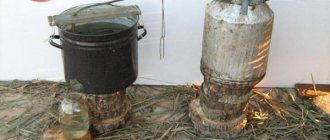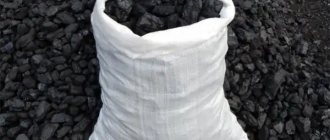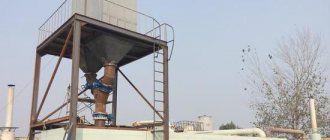Both oil and gas are considered non-renewable resources because it takes entire geological epochs to restore their reserves. Today we are exploring the opportunities that major energy consumers are beginning to look at: the production of biofuels from wood waste, plant materials, and even sewage.
The photo shows pellets, a type of biofuel made from wood, which is gaining popularity in our country.
What it is
In short, this is organic matter that:
- It's cheap;
- May burn and release large amounts of heat.
A variety of substances fall into this category:
- Liquid biofuels are represented by ethyl, butyl and methyl alcohols, dimethyl ether and biodiesel - flammable organic fats.
Useful: the name comes from the main consumer - diesel engines. Diesel is capable of running on fats in the same way as an internal combustion engine - on alcohols, flammable gases and ether. Actually, the correct name for diesel fuel is solar oil. At normal pressure and room temperature, it is quite difficult to ignite it.
- Solid biofuels include the usual firewood, pellets - fuel pellets made from sawdust, peat briquettes, and even straw and wood chips.
- Gaseous types of biofuels - methane, hydrogen and the so-called biogas - a mixture of methane and CO2 released during the fermentation of organic waste.
In these tanks, organic waste is converted into biogas by bacteria.
Bioethanol production
Industrial technology for the production of bioethanol involves the processing of plant raw materials, which is very similar to the production of conventional alcohol. The first stage of the process is the preparation of raw materials, their grinding. The main condition for guaranteeing the successful production of bioethanol is a high content of starches in the raw materials. This is why cereal crops are best suited for bioethanol. After grinding, the raw material undergoes fermentation, that is, starches are broken down by interaction with yeast. The result is alcohol, fusel oils and stillage go to waste. The latter is used in the manufacture of feed.
The quality of production of bioethanol and similar biobutanol is gradually improving, as scientists are developing new types of bacteria that improve and reduce the cost of the production process. The advantage of such biofuel is ease of storage; no special equipment is required for transportation, since bioethanol does not mix with water.
Why is this necessary?
The old proverb “until thunder strikes, a man will not cross himself” exhaustively describes the situation with the use of fossil energy resources by the current civilization. Oil production and refining provides super-profits, which no one is in a hurry to give up in the name of vague ideas of ecology and a bright future.
Cars, just like a hundred years ago, burn liters of gasoline; CHP plants run on fuel oil; all promising developments in the field of developing alternative energy sources are bought up by large corporations and shelved; projects that cannot be purchased are discredited by all means.
However, it doesn’t take a rocket scientist to understand that the oil abundance will not last long. The world's oil reserves will run out in the next half century, and humanity will face an inevitable energy famine.
The solutions to the predictable impasse are obvious:
- Using renewable resources to generate energy - geothermal energy, the sun (see solar heating) and wind. The idea is good; but there are a few “buts”. Power plants of all relevant types are very expensive; Wind turbines and solar systems, in addition, occupy huge areas, and their efficiency is unpredictable - everything is determined by the weather. In addition, the accumulated energy is difficult, relatively speaking, to take with you on the road: existing batteries, with a reasonable weight, provide cars with too little mileage, incomparable with traditional gasoline cars.
A landscape typical of Germany, where the government's development strategy calls for the use of energy from environmentally friendly sources.
- Search for alternative sources of high-potential energy. The most global project available to the public is the ITER experimental thermonuclear reactor project under construction in France. However, so far thermonuclear energy cannot solve the basic problem: the energy consumption for confining plasma in a magnetic trap is almost not inferior to the useful output of existing reactor prototypes. Discoveries in the field of cold thermonuclear fusion have been successfully thrown with banana peels under the waving of the conductor's baton of oil corporations. Other alternative energy sources, periodically mentioned in the press, are still far from practical implementation - either due to a deliberate information blockade, or due to the inertia of thinking of government structures. And not only Russian ones.
- The third way does not mean any revolutions in technology and, accordingly, in the economy. Cars still use diesel and internal combustion engines; Thermal power plants also smoke the sky. But in the furnaces and cylinders fuel burns, the reproduction of which takes not millions of years, but a few years - products of the processing of plant and animal raw materials.
It’s a sin to argue: burning wood in a furnace is barbaric. The good news is that many tree species grow very quickly.
"Green" diesel
If ethanol is a partial substitute for gasoline, then for diesel fuel there is also a renewable substitute - biodiesel
. It is obtained from methanol and vegetable oils, primarily rapeseed, palm and soybean, using the transesterification method.
The undisputed leaders in biodiesel production are EU countries. In 2009, more than 6 million tons of biodiesel fuel were produced here, and its production volumes are growing steadily. Moreover, in 2008, a Boeing 747 successfully made an experimental flight from London to Amsterdam, the tanks of which were filled with a mixture of coconut and palm oils and aviation kerosene.
How complete a replacement will bioethanol and biodiesel be for traditional fuels? Ethanol has undoubted advantages - a high octane number (108 versus 92-98 for gasoline), which allows engines to develop much higher power. The combustion process of ethanol, an oxygen-containing compound, is much more efficient than gasoline, which, among other things, reduces the toxicity of exhaust gases. However, the heating value of ethanol is almost 40% lower than that of gasoline, which leads to higher fuel consumption. Another disadvantage of ethanol is its ability to absorb large amounts of water, which leads to fuel separation and deterioration of its quality.
In traditional biodiesel production technology, transesterification of fats with methanol occurs at relatively low (50–80 °C) temperatures using either alkalis (NaOH or KOH) or mineral acids (H2SO4, HCl, H3PO4) as catalysts. In addition, sometimes more complex bases are used as catalysts for the transesterification of triglycerides, such as the carbonic acid derivative guanidine HNC(NH2)2 and other amines, which make it possible to achieve a high (up to 98%) degree of conversion of the substance in one stage.
This homogeneous technology for producing biodiesel, despite its simplicity, has a number of disadvantages: the resulting mixture of products must be separated, neutralized and thoroughly washed. This results in large quantities of salts, soap and waste water that must be disposed of. The catalyst itself is irretrievably lost. The resulting useful by-product - glycerin - is contaminated with a salt solution and requires additional purification. All this increases the cost of biodiesel and reduces the competitiveness of this technology. Over the past five years, there has been a sharp increase in the number of works devoted to a more environmentally friendly method of producing biodiesel using so-called heterogeneous catalysts
basic and acidic in nature. The difference between heterogeneous catalysts and homogeneous ones is that they are not in the same phase with the reacting substances, but form an independent phase, and the reaction occurs at the phase boundary. The advantages of heterogeneous catalysts are not only that they can be used repeatedly, but also that biodiesel is of much higher quality. This eliminates the stage of oil pre-treatment, minimizes the volume of liquid waste, and does not generate salts or soaps.
However, heterogeneous transesterification catalysts have special requirements. In particular, they must be resistant to water contained in the original products. All these requirements were taken into account at the Institute of Catalysis SB RAS when developing heterogeneous transesterification catalysts. Understanding target reactions at the molecular level allowed us to approach the development process consciously and purposefully. The emphasis was placed not so much on the catalytic activity of substances, but on the stability of their operation under real conditions. As a result, it was found that some of the most promising catalysts for the production of biodiesel are barium, calcium and lanthanum hexaaluminates. Hexaaluminates are characterized by relatively low activity compared to other catalytic systems, but they have the important advantage of being highly resistant to leaching. This especially applies to catalysts calcined at a temperature of 1200 °C
Biodiesel, like bioethanol, has both disadvantages and advantages. Unlike conventional diesel fuel, it contains almost no sulfur. When released into soil or water, it completely decomposes within three weeks. In addition, it has good lubricating characteristics and a higher cetane number - at least 51. However, its higher viscosity does not allow it to be used in the cold season.
Therefore, in the USA and Europe today a policy of “soft” integration of biofuels is being pursued: basically, a fuel mixture containing 10% ethanol and 90% gasoline (E10 standard) is used. Much less common is fuel with a higher ethanol content - E85.
Fuel containing a tenth of ethanol does not require modifications to the car's engine and is now approved for use by all automakers. Since in America, in most metropolitan areas, federal law obliges fuel sellers to use oxygen-containing additives (the norm is 2.7% oxygen in gasoline), ethanol today has practically replaced the previously used methyl tert-butyl ether. For cars running on diesel fuel, a mixture consisting of 20% biodiesel and 80% diesel fuel (grade B20) is used.
Therefore, we can confidently say that fuel mixtures are already the standard of today.
This compromise option of simultaneous use of traditional motor fuel and biofuel allows you to use all the advantages of the former and neutralize the disadvantages of the latter. However, there is another approach to integrating biofuels into the existing consumption infrastructure - establishing the production of higher quality second-generation biofuels.
OCTANE NUMBER of fuel for internal combustion engines is a conventional value characterizing the measure of its detonation resistance. The knock resistance of n-heptane is assumed to be 0, and that of isooctane is 100. The octane number of the fuel is equal to the percentage of isooctane in the reference mixture with n-heptane, which behaves in the same way as the fuel under study. CETANE NUMBER is a characteristic of the flammability of diesel fuels, determining the time interval from fuel injection into the cylinder to the start of combustion. The flammability of α-methylnaphthalene is taken as 0, of hexadecane (cetane) - as 100. The cetane number of diesel fuel is equal to the volume fraction of cetane in the model mixture. The higher it is, the more calmly and smoothly the fuel mixture burns. Optimal performance is ensured by fuels with a cetane number of 40-55
An alternative to the process of transesterification of triglycerides of fatty acids and their derivatives to produce biodiesel can be catalytic cracking
(decomposition of hydrocarbons of raw materials under the influence of high temperature in the presence of catalysts), as well as
hydrocracking
(cracking in the presence of hydrogen).
As a result of catalytic cracking of esters and triglycerides of fatty acids, hydrocarbons of diesel, gasoline and kerosene fractions are formed. The main disadvantage of this process is the rapid coking of the catalyst - the formation of carbon deposits on its surface.
The hydrocracking process uses catalysts based on transition metals, in the presence of which a number of different reactions occur. The main products of triglyceride hydrocracking are light n-alkanes C15-C17, which are called green diesel
) or "supercetane" (
Supercetane
).
Green diesel has a higher cetane number than biodiesel and diesel fuel, as well as greater stability due to the absence of oxygen-containing functional groups. Therefore, today this process attracts the attention of researchers to a greater extent than the production of biodiesel.
Implementation rate
What is the dynamics of biofuel production? How is its consumption growing?
World
In 2007, the total volume of liquid biofuels produced worldwide was 54 billion liters. If we evaluate the volume of consumption, however, the figures do not look so impressive: this is only 1.5 percent of the total consumption of liquid fuel of all types.
Interestingly, at that time, most of the biofuel produced was ethanol: 46 billion liters. The largest producers are the USA and Brazil. They accounted for 95% of world production.
By 2010, however, the share of these countries had dropped to 90%, and total liquid biofuel production had risen to 105 billion liters. 86 of them are ethyl alcohol, the rest is biodiesel.
Europe aims to transfer 10% of transport to alternative energy sources by 2021. In Sweden, there are three hundred gas stations where you can refuel diesel cars... with pine oil. On March 8, 2013, the first transatlantic flight using biofuel was carried out.
Russia
We present bare facts without any assessment of them.
- Russia's exports of biofuels (primarily straw, cake and wood chips) amounted to 2.7 million tons in 2010. At the same time, the country consumed only 20% of all types of biofuels produced.
- By the end of 2013, it is planned to launch 50 biogas power plants in Russia. The total capacity of all, however, will be only 120 megawatts. For comparison, the notorious Fukushima power plant in Japan at the time of the accident had a total capacity of six power units of 4.7 gigawatts.
The general trend is shown by the graph. Actually, humanity simply has no alternatives.
Unusual, exotic and forgotten types of biofuels
Here it is worth touching on wood, which can act as biofuel. First of all, we must mention the turpentine-alcohol mixture, which was used as fuel back in 1826. But turpentine is obtained from the pyrolysis of wood. There are separate mentions that during the so-called “fast” high-temperature pyrolysis, a liquid is condensed, its characteristics are illogical to oil.
It is worth remembering the direct use of wood as fuel for engines. When wood burns, carbon monoxide is produced, which serves as fuel. During World War II, Germany quite widely used cars with such engines, including passenger cars. In the Soviet Union, gas-generating cars were also created, ZIS 21, ZIS 13, and GAZ 42.
They worked on ordinary wood logs. True, when replacing gasoline with gas, the engine power dropped, as did the speed and load capacity, and one refueling of the gas generator unit was enough for ninety kilometers, but in wartime conditions, with a shortage of other types of fuel and in remote places, such cars operated successfully. And even in Moscow during wartime there were buses equipped with gas generators.
Despite the widespread use of gasoline and diesel fuel as fuel for internal combustion engines, there is a constant search for alternative sources of fuel. And there are already several different types of biofuels that can ensure the operation of internal combustion engines in any conditions.
What else is worth reading
Chemical properties of gasoline
Biodiesel at home
Boxer engine and its advantages
Vehicle track
Fuel filler neck
Reverse side
Of course, not a single phenomenon in the modern world can be only positive or negative. What's the catch with biofuels?
The shadow side of its production concerns, first of all, the use of plant raw materials.
Huge areas occupied by so-called energy forests (intended for burning), corn for ethanol production, and rapeseed, from which oil is squeezed out for diesel engines, are taken away from food producers.
According to experts, the total number of hungry people in the world will increase to 1.2 billion people in the next decade precisely because of the growing demand for biofuels.
A nuance: the production of methane, hydrogen and biogas from waste is a rare case when no harm is caused to either the environment or the economy of the producing countries.
An unknown artist very clearly showed the benefits of recycling biological waste.
Biogas production
Biogas, as a biofuel, is a very valuable product that significantly reduces the cost of conventional fuel and makes it more environmentally friendly and cleaner. The process of biogas production is the creation of conditions in which, without access to air, biological waste decomposes with the help of biobacteria.
The production of biofuel - biogas requires a special device. The first stage is grinding of raw materials. A certain amount of straw, husks, sawdust, etc. enters the reactor, that is, a reservoir in which it is heated. A special loader goes to this tank, and sometimes a pumping unit is used. All equipment is seriously insulated to maintain the temperature inside. Grinding and periodic mixing are carried out using built-in mixers. The installation is made of reinforced concrete, sometimes steel with a special resistant coating is used.
A nutrient-rich environment for bacteria is created inside the reactor, that is, plant waste from production is placed there. And bacteria produce biogas. So, the production of biological gas requires plant raw materials, heat (up to +38 degrees), and mixing with a mixer. The resulting gas enters the gas tank, where it is purified and then transported to the consumer’s boiler or to an electric generator. The air supply to the reactor is blocked, so there is no danger of explosion.
The description of technology using bird droppings or manure is slightly different; it includes an additional filtration phase.
Production methods
Let's take a look at how the most popular types of fuel are produced from plant materials. It is unrealistic to list all the technologies used in one article, so we will touch on the most popular types of fuel.
Pellets
This is the name for fuel pellets made from pressed sawdust, which allow you to automate the supply of fuel to the boiler and produce slightly more heat during combustion compared to firewood.
Their production does not require complex equipment; however, it is clearly not worth building a mini-factory for their production with your own hands. At the established level of prices for pellets and unprocessed fuel wood, production can only pay for itself in large volumes.
How does this type of biofuel production plant work?
- The logs are cleared of bark on a debarking machine.
- The chipper turns them into small chips.
- A hammer mill transforms wood chips into fine sawdust.
- The sawdust is sifted and ungrinded wood chips are removed.
- The drum dryer removes excess moisture from the sawdust.
- Finally, the press turns them into granules.
- Physicochemical changes that make the granules durable occur when they are cooled. Non-granulated sawdust is sifted out and sent for recycling.
More popular, however, is the production of pellets not through a full cycle, but from finished wood chips or sawdust.
Wood waste is the optimal raw material for the production of pellets.
Biodiesel
We already mentioned what this is at the beginning of the article. How does a biofuel production plant from regular vegetable oil work?
The essence of the production is to remove glycerol molecules from vegetable fat, which gives it a viscosity that is unacceptable in engines, and replace it with alcohol molecules. The correct name for this process is esterification. .
The instructions for making biodiesel are something like this:
- Oil (linseed, sunflower, rapeseed - it doesn’t matter) is mixed with alcohol (ethyl or methyl) and a catalyst - ethyl or methyl ether, respectively. The mixture is thoroughly mixed.
- The settled mixture separates. In the upper part of the container, the biodiesel itself remains - a flowing liquid the color of honey; at the bottom there is more viscous and dark glycerin. Between them is a layer of ready-to-use liquid soap, which can also be used.
- The last stage is drying (vegetable oil has quite a high water content). To do this, magnesium sulfate is added to biodiesel, which absorbs water; it is then filtered with a conventional fine mechanical filter.
The price of the resulting product is determined, first of all, by the cost of plant raw materials. Buying vegetable oil for the production of diesel fuel is a strange idea, to say the least, simply because solar oil is much cheaper.
Useful: biodiesel is more chemically aggressive compared to diesel oil. It reduces the service life of oil seals and rubber gaskets, clogs fuel filters quite quickly, and for this reason alone is a, let’s say, ambiguous source of energy.
Full-cycle biodiesel production scheme from rapeseed.
Bioethanol
Equipment for the production of biofuels of this type is a very productive and efficient... moonshine still. The production technology itself has changed little over the past decades, except that the range of raw materials has expanded noticeably .
The famous Ostap Bender told Americans exhausted by Prohibition that you can distill moonshine even from an ordinary stool, and offered to share the recipe for the stool.
What is ethanol produced from for technical needs almost a century after the epic described in “The Twelve Chairs”?
- Most bioethanol is produced, as already mentioned, in Brazil - from sugar cane and in the USA - from corn. Obviously, Ostap’s lessons were remembered and found application on a national scale.
- Cassava tubers, a plant grown in large quantities in China, Thailand and Nigeria, are also a very promising raw material. Its main advantage is the simplicity and manufacturability of production, and if so, then it is cheap. According to Wikipedia, the cost of producing alcohol from cassava that matches the fuel efficiency of a barrel (159 liters) of oil is only $35. A barrel of crude oil costs about three times as much on the world market.
The alcohol produced from these tubers is much cheaper than crude oil.
- Finally, cellulose obtained from sawdust, straw and other waste of wood and plant origin is an almost inexhaustible source of bioethanol. However, due to the relative complexity of production, it is currently considered uneconomical.
Well, let's wait for a further rise in oil prices. Perhaps in the foreseeable future there will actually be an opportunity to fill a car with a stool...
What about the technology for producing biofuel at home?
Well, really, after the 1985 decree in our country, it’s ridiculous to even ask about such things...
- Crushed plant materials with the addition of yeast undergo a fermentation process, resulting in a mash with an alcohol content of no more than 15 percent. At higher concentrations, yeast bacteria die.
- The filtered mash undergoes rectification: it is heated in a limited volume. In this case, the light fractions (primarily ethanol) sublimate first. The alcohol vapor is then condensed in a continuously cooled coil (or a device similar in functionality).
For industrial volumes, instead of traditional yeast, bioengineering products are used - artificial enzymes glucamylase or amylosubtin.
The technology has not changed since Ostap's time.
If you are considering the idea of switching your car to another type of fuel, it is better to consider that without adaptation, a serial internal combustion engine can be guaranteed to operate on an alcohol-gasoline mixture containing no more than 10 percent alcohol. However, there is evidence of trouble-free operation of engines even with a 40/60 ratio.
Production of fuel briquettes
The technology for making fuel briquettes is in many ways similar to the production of pellets. The difference is in the shape of the finished product. Agricultural and wood processing waste is also finely chopped and pressed under high pressure.
Some types of raw materials for the production of briquettes must be heated to a very high temperature - up to 350 degrees. There is a lot of lignin in wood raw materials, so pressing goes well. When using annual plants, there is not enough lignin, so the production of fuel briquettes from straw requires the addition of binders.
At high temperatures, the surface of the briquettes melts the most, which makes them durable. This is very important, since transportation can significantly damage biofuel.
Cylindrical briquettes are produced using impact mechanisms, the length of the produced briquettes can be infinite, cutting into pieces is carried out at will. There are solid briquettes and briquettes with a hole inside. The compaction density is very high, close to coal. The volume of the briquette produced is 10 times less than the volume of the original raw materials taken for production.
Is burning charcoal difficult?
When we say charcoal, we immediately imagine outdoor recreation, barbecue, barbecue. Pleasant smoke, flickering lights in the barbecue! However, the use of charcoal is not limited to just cooking meat; it is needed in blacksmithing, foundry work, medicine, for filtering drinking water and even for making gunpowder and for household needs.
Those who have had to deal with charcoal know that buying it costs a lot of money, and they often think about how they can get it themselves at home or in the field, with their own hands - with their very skillful hands. Indeed, it is possible! Moreover, there are two most common methods - the production of this biofuel in a pit or in a metal barrel.
Method of making coal in a pit
Usually, coal burning is carried out in the forest, which is more convenient than at home, but due to widespread fires in forests, you need to think carefully about the place and time of the work.
A place is selected next to a large supply of dry wood or a fallen tree, and such as not to damage the surrounding vegetation. In order to get two bags of coal, it is enough to dig a hole 50 cm deep and 75-80 cm in diameter with slightly sloping walls. This is also easy to do yourself.
At the compacted bottom of the pit, a small fire is made by hand from dry birch bark and small branches, and when the fire burns well, small-sized prepared firewood, up to about 30 cm in length, is placed on it. If you choose branches with a diameter of about 7 cm, then you can completely cope with the cutting on your own, without an assistant. The firewood is stacked tightly and gradually as each layer is burned. Well-burnt firewood can be straightened with a long stick.
For complete burning in such conditions, 3 hours is enough. Then the coals are covered with moss, dry leaves or grass and covered with earth, which is compacted tightly. It will take another two days for the coal to cool sufficiently, after which the solid biofuel will be ready. After this time, a layer of earth is removed from the pit, the coal is raked out, sifted and packed into bags.
If a new pile of firewood is not made, then the hole is filled up in such a way that the fertile layer of soil is on the surface, and everything is also covered with leaves. Of course, such coal production requires some material and physical costs, but it is much cheaper than the cost of purchasing it, and there is also a moral aspect - everything was achieved through one’s own efforts and made with one’s own hands.
A method for producing coal in a barrel on your own territory
In order to obtain solid biofuel at home, namely charcoal, a thick-walled metal barrel with a capacity of 200 liters is used. At the bottom you need to make a fitting for forced air injection with a household vacuum cleaner.
Just like in a pit, a small fire is built at the bottom of the barrel, and then small logs are gradually added. To stack the firewood more tightly, the barrel can be shaken periodically. After supplying air, the firewood will smoke less and be well engulfed in flames. The air supply from below should begin only after the barrel is filled with firewood approximately halfway. You also need to periodically adjust the coals with a pole and do not forget about safety precautions when working in “hot” conditions.
To continue the process of burning coal without air access, you should cover the barrel with a lid and cover all the cracks with a solution of earth and water. If there is no “original” lid, then it should be made from some piece of iron.
It should be taken into account that with this method of working in home, often unsuitable conditions, a certain amount of waste and ash is formed, but within reasonable limits. After the barrel has completely cooled, it is turned over, and the finished coal is sifted and packaged. This is a production that you can master with your own hands.
You may not get high-quality coal the first time, but patience and work will grind everything! The main thing is not to quarrel with your neighbors because of heavy smoke.
Gas generating units
Apparatuses and devices for producing pyrolysis gas are called gas generator units.
They are a sealed stove with adjustable air supply and the ability to shut off the chimney.
To reduce the requirements for the chimney, air is forced into them using centrifugal pumps.
Moreover, they either use a pump with variable performance (this is done using a frequency converter), or install several pumps to ensure maximum air supply in ignition mode.
When the contents of the installation flare up, the air supply is reduced, leaving only the minimum necessary to maintain the optimal temperature.
As a result, thick black smoke begins to emerge from the installation, which contains unburned carbon (soot) and pyrolysis gases.
This gas cannot be used immediately due to the large amount of soot, so it is purified using various devices, the most popular of which are cyclones.
The soot collected by the cyclone can either be loaded with wood waste into a gas generating plant or sold to tire manufacturers. After all, soot is one of the main components, the share of which reaches 30%.
In addition, water vapor is removed from the pyrolysis gas, which increases its combustion temperature. To do this, the gas is passed through a cooler, where the water vapor condenses into water droplets.
As water accumulates, it is drained through a special tap located at the bottom of the cooler.
After this, the gas is fed into a fine filter, which uses electrostatic devices, cardboard cartridges and a container of water.
Electrostatic devices operate due to the different electrical capacitance of gas and any solid particles.
Under the influence of static electricity, solid particles stick to the positive or negative electrode (depending on the electrical potential of the particle), and the gas passes through without obstacles.
The electrodes must be periodically cleaned of soot adhering to them.
Cardboard filters work on the principle of a mesh - they allow gases and solid particles to pass through them, which are smaller than the size of the pores that permeate the entire cartridge, so it has to be changed regularly, which is not cheap.
The water in the container does not retain the gas, but does trap the smallest solid particles of soot. As the water becomes dirty, drain it and add new water. The drained water is evaporated to produce soot, which is then either sent to a gasification plant or sold to tire manufacturers.
Equipment Features
Despite the fact that sawdust is also wood and the basic principles of obtaining gas from it are the same, conventional gas generators cannot be used .
This is due to the peculiarities of air movement through the fuel mass.
Large wood waste does not adhere tightly to each other , so air between them easily passes in any direction.
When the fuel container is filled with sawdust, air passes between them very little, just as pyrolysis gas cannot pass through.
Therefore, in installations designed to produce pyrolysis gas from sawdust and shavings, air is supplied in several places , and the gas outlet hole is located at the top.
When planning to buy a gas generator, do not forget to check whether it is designed to work on sawdust and shavings. After all, generators designed for processing large waste do not work well with small ones , but those designed for small waste can process large ones.
Cost of gasifiers
We have prepared a table that includes the most popular models of gas generator units.
Most of them are designed for use with heating boilers, but they can be adapted for other purposes.
In addition, we included a semi-industrial gas generator for a car in the list. To clarify its parameters and select the most suitable one for your car, you need to contact the supplier using the link given in the table.
| Model | Additional functions | Power/Performance | Price thousand rubles | Seller or manufacturer website |
| KDO-1 | A gas generator with a combustion chamber and a heat exchanger for heating water (boiler). Possible purchase without heat exchanger and combustion chamber | 15-100 kW | 169 | bmpa.info |
| KSDO-125 | Gas generator with control panel and water heating boiler. If desired, another boiler can be installed, and it is also possible to purchase a complex without a boiler | 125 kW | 495 | tayur-kotly.ru |
| KH-100V | Gasifier without additional equipment | 100 m3 of gas per hour | 2700 | ooo-smog.promportal.su |
| UGK | Gas generator for car | 50-100 kW | 460 | belgorod.promportal.su |
| UDSO-60 | Gasifier without additional equipment | 60 kW | 300 | pifmaster.ru |
How to make a gas generator yourself?
The high cost of industrial and semi-industrial gas generators forces many to make these devices themselves. Moreover, there is nothing particularly complicated about it.
We have prepared links to thematic forums where the manufacture of various models of gas generators is discussed.
There you will also find tips to make it easier to find materials for making this device, as well as various recommendations that will help you choose one or another model for self-production.
Here are links to thematic forums:
- Forumhouse – manufacturing of an automobile gas generator.
- Moonshiners forum - making a gas generator from a pyrolysis boiler.
- Vasdom - making a gas generator and discussing various models.
- OstmetallInfo - manufacturing a gas generator for a forge and discussing its advantages and disadvantages.










